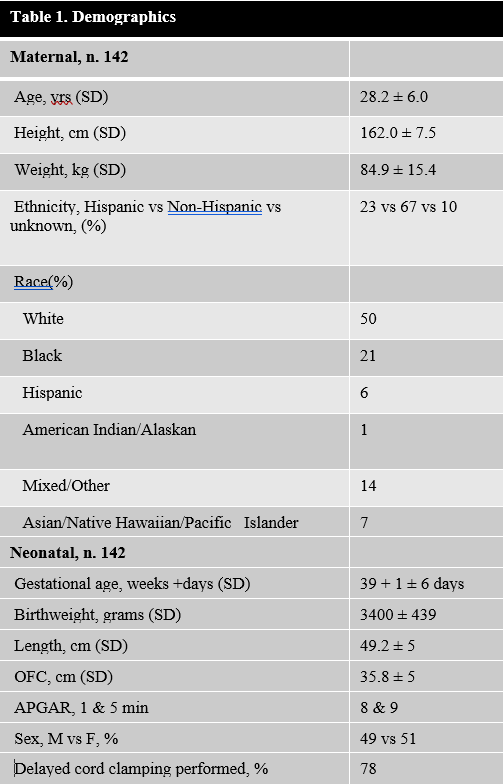Neonatal Hematology & Bilirubin Metabolism
Neonatal Hematology & Bilirubin Metabolism 2: Hematology
138 - Use of Reticulocyte Hemoglobin in Identifying Maternal-Infant Dyads at Risk for Iron Deficiency Anemia
Publication Number: 138.239
- CP
Cassandra Pekar, MD (she/her/hers)
Fellow
SAUSHEC
Driftwood, Texas, United States
Presenting Author(s)
Background:
Anemia in pregnancy approaches 30-40% globally with iron deficiency (ID) comprising half of these cases. In the United States, iron-deficiency anemia (IDA) during pregnancy is 5%. ID and IDA can lead to deleterious effects a negative impact for the maternal-fetal dyad. Reticulocyte hemoglobin content (CHr) provides an estimate of functional iron stores available for new RBC production in the previous 3-4 days and is available without additional blood sampling. CHr monitoring in pregnant women and their infants could lead to earlier intervention with iron supplementation.
Objective: To utilize CHr to identify pregnant women and their infants at risk for ID and IDA.
Design/Methods: This was a prospective, observational study following diagnosis of anemia during pregnancy. Neonatal values were obtained via cord blood samples drawn at delivery. Preterm infants and newborns with history of hypoxic-ischemic encephalopathy, cord prolapse, abruption, fetal-maternal hemorrhage, or monochorionic twin gestation were excluded. CHr and hemoglobin (HgB) data were analyzed from 1st and 3rd trimester maternal and cord blood.
Results: Demographic data is shown in table 1. Average maternal HgB (g/dL±SD) was 12.2±1.0 and 10.5±1.1, and CHr (pg±SD) was 32.8±3.2 and 30.0±3.7 in the 1st and 3rd trimesters, respectively. See table 2. 31% of the maternal population had ID (CHr< 31.2 pg) in the 1st trimester increasing to 58% in the 3rd trimester. Infants’ mean cord HgB was 15.0±1.6 g/dL. 12% were anemic, and 47% of these anemic infants were ID. Maternal 1st trimester CHr as a predictor of neonatal anemia showed 21% sensitivity, 45% specificity, 20% positive predictive value (PPV), and 66% negative predictive value (NPV). Maternal 1st trimester CHr as a predictor of newborn IDA had a 32% sensitivity, 68% specificity, 47% PPV, and 53% NPV. In the 3rd trimester, maternal CHr as a predictor of neonatal anemia demonstrated 64% sensitivity, 44% specificity, 29% PPV, and 78% NPV. 3rd trimester CHr as a predictor for infant IDA showed a 60% sensitivity, 45% specificity, 58% PPV, and 48% NPV.
Conclusion(s): During pregnancy, there is poor sensitivity and specificity as well as PPV and NPV using CHr (maternal iron deficiency) as a predictor for neonatal anemia or ID. The reasoning likely resides within physiologic placental functioning rendering maternal iron stores as unreliable predictors for newborn IDA. 

